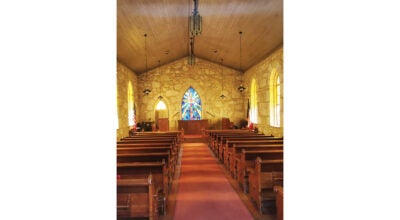A Few Good Men: Area firefighters hone their training
Published 7:00 pm Sunday, August 11, 2013
MONTICELLO – Lawrence County firefighters are among the best trained men in Mississippi – ranked 14th in the state in 2012 for the number of people with special certification and training.
That’s according to Lawrence County’s fire training coordinator, Jared Evans – the man behind the latest specialty certification classes held in Monticello this past Monday through Saturday.
“We might beat that ranking this year,” he said.
A group of about 40 men, most of them volunteer firefighters, were certified as Hazardous Materials Technicians Saturday – a level two certification for hazardous materials training, Evans said.
“The first level is an ‘awareness and operations’ course,” he said, “where men are trained to identify a hazardous area, isolate it and deny entry. What we’ve been doing this week is a more aggressive type training where they learn to go into a hot zone and actually contain the hazardous material.”
The course is paid for by federal grants from the U.S. Department of Homeland Security and the Mississippi Emergency Management Agency.
“These are funds made available to firefighters in every county,” Evans said. “It’s up to the men in each unit to take advantage of the training made available through the Mississippi Fire Academy.”
He said the certification is done through the National Fire Protection Association.
“It’s recommended that fire units be recertified every few years,” Evans continued. He said all Lawrence County fire departments are involved – the training was open to all volunteer and all paid firefighters.
Evans is a Lawrence County firefighter and is a level III instructor with the Mississippi Fire Academy. He said he and two other instructors, Monticello Fire Chief Matt Bailey and adjunct instructor Robert Parker, trained the men with reading and written tests last week, along with a live simulated D-con line.
The D-con line is made of men who serve as the entry team – they go into a “hot-zone” of hazardous material in a suit that Evans described as encapsulated, covering the oxygen tanks, masks and fire suits – carrying an “over-barrel” that is used to encapsulate a leaking or contaminated barrel inside so it can safely be removed from the scene.
Then there are the D-con men in the “cool-down zone” who also wear oxygen tanks, masks and hazardous material resistant suits. They are equipped with cleaning materials – usually water and brushes – to wash hazardous materials off of the entry team as they stand inside decontamination pools made to contain the hazardous material in one place for safe disposal.
Bailey said this certification is special because it goes a step above the basic “awareness and operations” course required for all first responders.
“Any training beyond that will add a particular set of skills special to that department or that position in the department,” Bailey said.
Parker was complimentary of the Lawrence County firefighters.
“The majority of men taking these classes are volunteers,” Parker said. “A lot of departments aren’t as aggressive in training, but Evans is pro-active and these firefighters are well trained for emergency situations.”
Evans said it is unique for a group of volunteers to be trained as technicians for hazardous materials. He said he is looking at the next level for a few of the men.
“There is another aspect of training that is a course in the chemistry of hazardous materials,” he explained, “where you learn properties of say, hydro-carbon – you learn what’s flammable and what’s caustic. That’s what I’m looking at next.”
Parker said the next training module for Lawrence County firefighters is in November, called Rope Rescue Certification, where first responders learn how to retrieve victims of fire, motor-vehicle accident, flood, hurricane or other disaster from remote heights such as bridges, trees and buildings.





